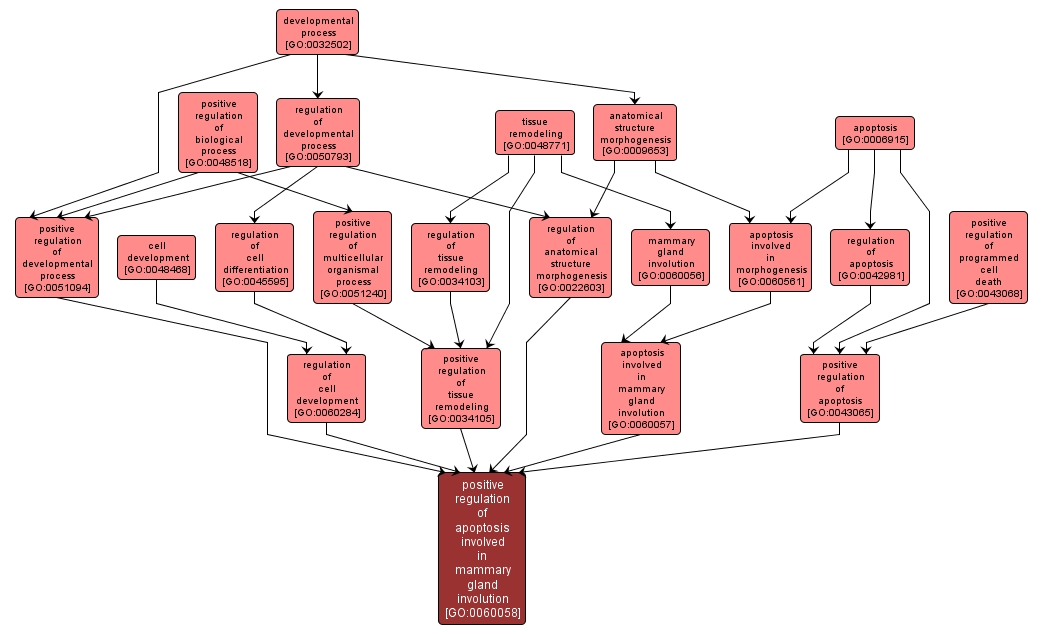GO TERM SUMMARY
|
| Name: |
positive regulation of apoptosis involved in mammary gland involution |
| Acc: |
GO:0060058 |
| Aspect: |
Biological Process |
| Desc: |
Any process that activates or increases the frequency, rate or extent of cell death by apoptosis of mammary epithelial cells during mammary gland involution. |
|

|
INTERACTIVE GO GRAPH
|














